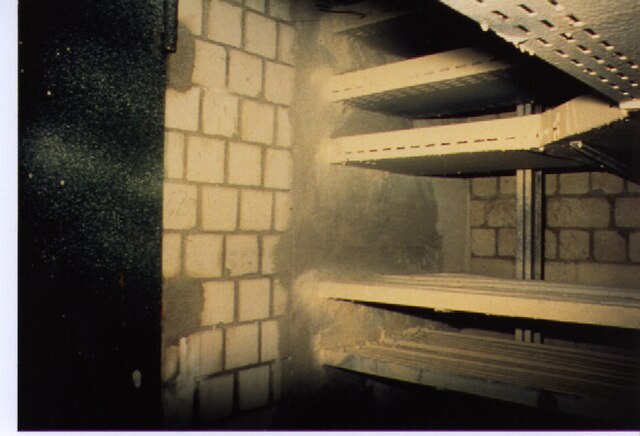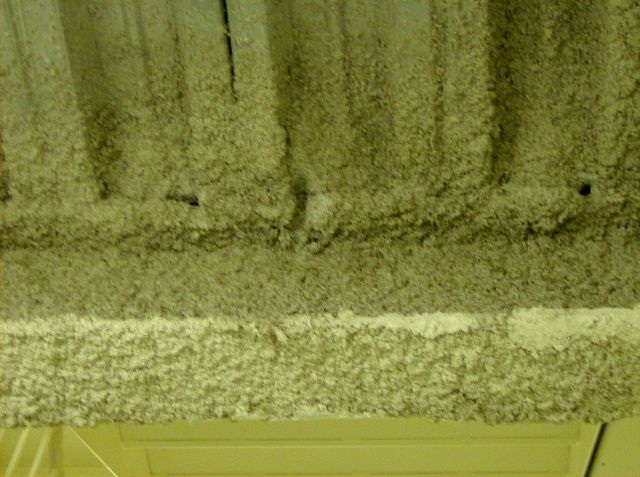A firewall is a fire-resistant barrier used to prevent the spread of fire. Firewalls are built between or through buildings, structures, or electrical substation transformers, or within an aircraft or vehicle.
Firewall residential construction, separating the building into two separate residential units, and fire areas
Example of a firewall used to inhibit the spread of a fire at an electrical substation
A building under construction, showing the structurally independent cinderblock firewalls subdividing the building
Building 4 of the Waynesboro Outlet Village, showing a concrete firewall running through the building
Passive fire protection (PFP) is components or systems of a building or structure that slows or impedes the spread of the effects of fire or smoke without system activation, and usually without movement. Examples of passive systems include floor-ceilings and roofs, fire doors, windows, and wall assemblies, fire-resistant coatings, and other fire and smoke control assemblies. Passive fire protection systems can include active components such as fire dampers.
Fire-resistance rated wall assembly with fire door, cable tray penetration and intumescent cable coating
This I beam has a fireproofing material sprayed onto it as a form of passive fire protection.






